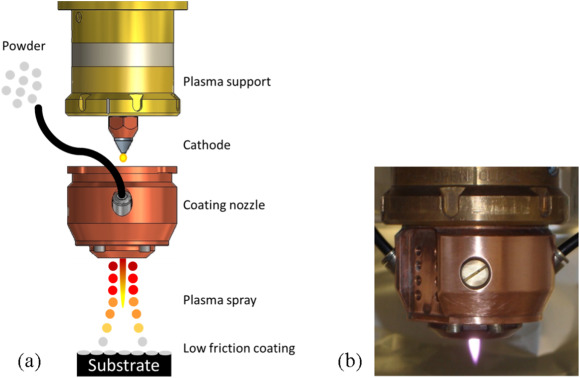Researchers have figured out a means of reducing the friction and improving the wear resistance of 3D printed nylon-carbon fiber plastic parts, as published in a recent journal paper.
Triboplastics
Plastics are strong, stiff and lightweight, but they wear down pretty quickly in high-friction applications, such as gears or bearing faces.
A team of researchers from various institutes in Austria has found a way of turning SLS printed PA12 – CF thermoplastic composite parts into parts with enhanced tribological properties via application of a special coating applied with atmospheric pressure plasma deposition (APPD).

Coatings
There are traditional means of reducing the friction of plastics, but they are full of trade-offs. Organic paints can lower the CoF (coefficient of friction) but they have a tendency to wear off the substrate very quickly. You can electroplate plastic parts with metals to reduce the CoF, but they do not respond well to flexing, and so the coatings crack very easily.
There are a multitude of high temperature coating methods, but plastics do not respond well to the thermal loading of such processes. They tend to melt. In short, there is a lack of capability in applying high wear resistance at low deposition temperatures for plastics.
The few processes that are suitable, such as sputtering and arc evaporation are good candidates, but they are more suited for small batches rather than arger production runs.
Optimum Solution
The researchers found their solution in a process known as atmospheric pressure plasma deposition, which was shown to give the best balance of wear resistance, flexibility, and production capacity.
The process works by the precise feeding of the coating in powder form into a nozzle connected to a focused DC plasma torch. In the case of this research, the powder was composed of molybdenum disulfide and graphite. The torch melts the powder and due to its precise feed rate, it hits the plastic and immediately cools and solidifies onto the surface with increasing film thickness. It cools so quickly that the plastic does not melt. The image below shows the plasma torch process.

The research showed that coating composition and thickness were strong influencing factors on the tribological performance of the applied coating.
Pure molybdenum disulfide coatings were shown to wear rapidly. However, when combined with the graphite the wear resistance was increased significantly.
It was demonstrated that if the thickness of the coating was sufficiently high, the friction coefficients of less than 0.1 could be achieved. That’s four times lower than the friction coefficient of uncoated PA12.
The findings can be found in the paper titled “Low-friction, wear-protecting coatings on polymers by atmospheric pressure plasma spraying” which has been published in the latest Surface and Coatings Technology journal. You can read that paper over at this link.


